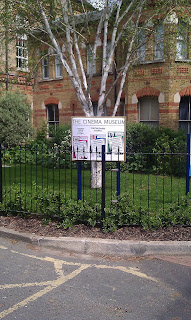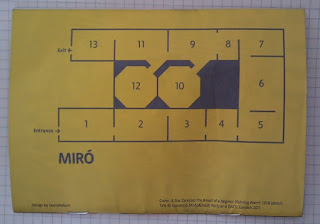Visiting this made this morning utterly worthwhile and immeasurably inspiring. It's exhausting, unnervingly despondent at points and, for all that, happily provocative. I was accompanied by my best friend, some of whose commentary I'll include in this entry for its trenchant observations. Arriving early meant we were among the first crush to enter the galleries, but that was no surprise given the breadth of publicity that has been spinning around The Ladder of Escape . I took some notes, thought a lot, chattered a little, and lamented at not being able to take photographs or make a video. This aside, I was there, and here is what I have to say about it; I'll use the three questions I've mentioned in earlier posts to structure the entry. Curation + Implied narrative/s There are over 160 pieces in the 13 galleries making up The Ladder of Escape which include painting, drawing and sculpture; an array of supports across canvas, velours paper, Masonite and copper

